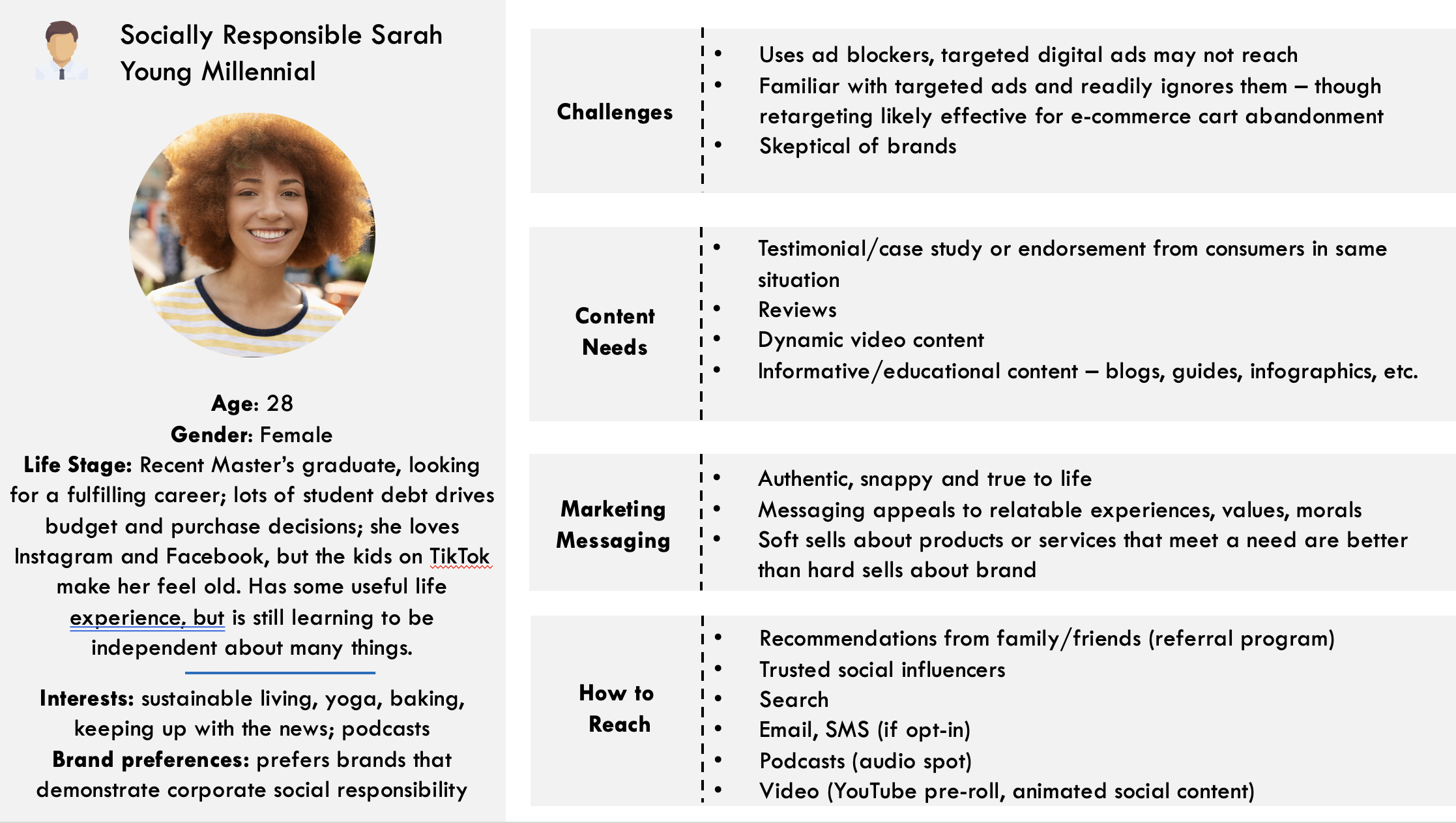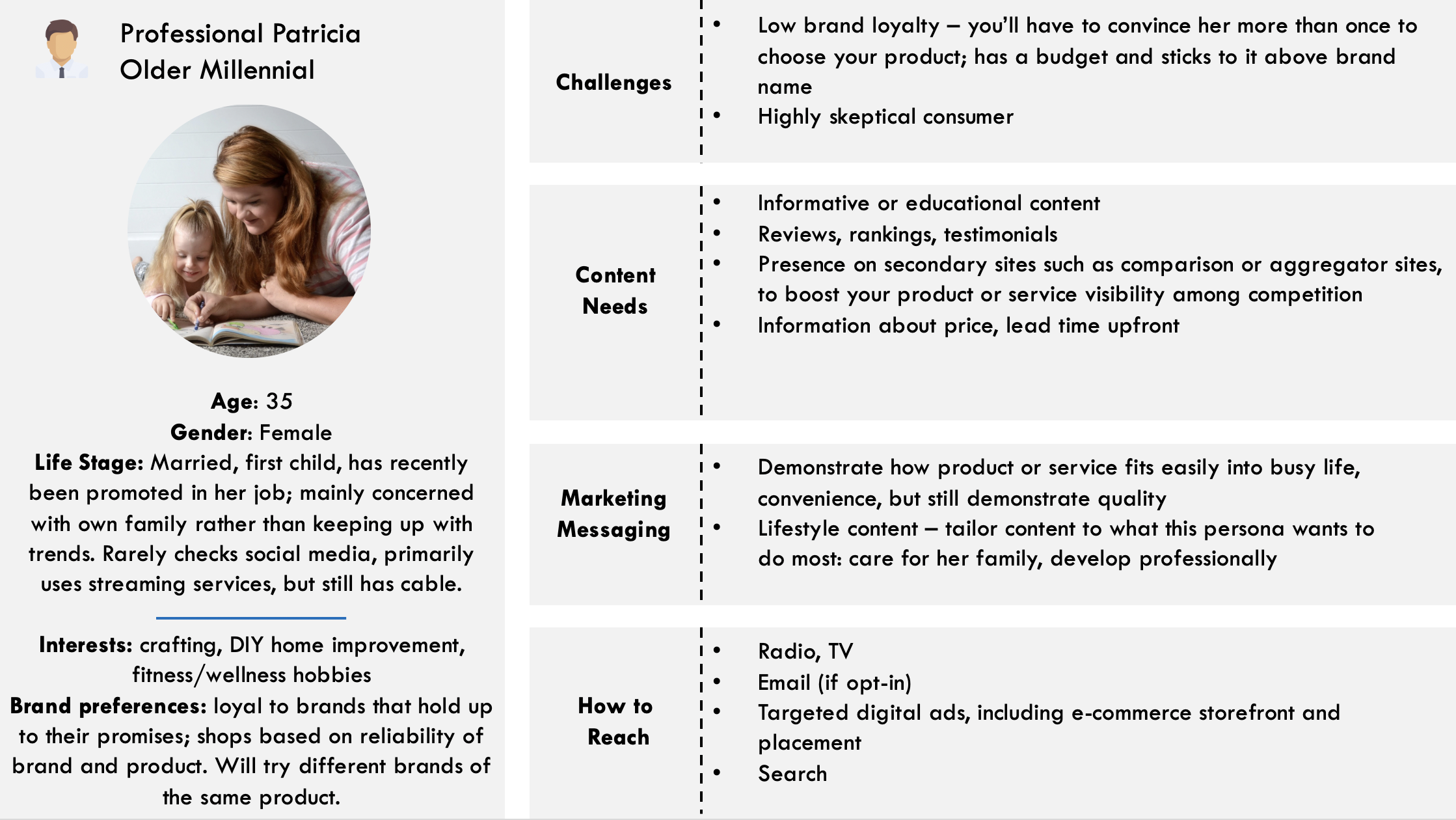Behind every analytics dashboard, sales data spreadsheet and CRM list are real people – your audience. While the data-points that marketers (and us market researchers) collect are vital for strategy, they don’t always tell the whole picture about your very human audience and their very human opinions, decisions or motivations for being your customer.
There are two main situations I encounter when consulting with clients:
- Internal stakeholders have NO ideas about their audience – but they want to!
OR
- Internal stakeholders know a LOT about their audience, but don’t know how to use that information to drive strategy.
Neither situation is ideal. Without a clear understanding of who the audience is or how to organize data about them, even the best marketing efforts can fail because they aren’t served to the right consumers at the right time with the right message or on the right channel.
As a researcher, my role is to turn disorganized audience data into a powerful blueprint for highly relevant, resonant marketing. And to do that, I build personas.
what is a persona and why do i need them?
A persona is a sophisticated distillation of audience data into a highly actionable, functional, usable guidebook to strategy. They are more dynamic than market segments and are more capable of realistically describing the audience.
My favorite example: Millennials.

In the frenzy of thinkpieces, articles and blogs about how to market to Millennials, authors have a habit of talking about this generation as a lump category. I have personally worked with many clients that ask to help them understand and reach “Millennials,” usually as a vague reference to a younger audience.
It would be easy to create a misaligned marketing strategy targeted to “Millennials” hinged around sweeping generalizations about this generation. For instance, the news tells us Millennials love their pets, Millennials have student loan debt, Millennials are big into search and social media. These generalizations aren’t necessarily untrue, but relying on them would result in a lukewarm ROI if implemented as foundations for marketing strategy.
In reality, “Millennial” describes adults that range from their mid-twenties to almost 40 years old. That means Millennials are everything from recent college grads trying to find a first job and afford their apartment; to adults with an established career, mortgage, marriage and kids.

It’s true Millennials, in general, have a search and content-heavy customer journey, but the messaging needs for early 20-somethings and near 40-somethings in different life stages can differ greatly.
Personas offer a tool to delve more specifically and optimize marketing strategies to fit each type of consumer in the Millennial segment.
how to build personas.
What type of information are we looking for? Personas are typically built on:
- Demographics that accurately represent the current and aspirational audience.
- Buyer challenges and pain points.
- Buyer’s digital behaviors.
- Messaging and medium that works best.
- Consumer behavior at different points in the consideration funnel.
- Events or circumstances that motivate the consumer to act.
And most importantly:
- Humanizing information about the consumer.
Depending on the scale of your persona project, these items could come from some handy secondary sources, or it could come from a robust research project with many inputs.
The main thing to be aware of when building personas: Build them from the ground up and keep them rooted in reality. Real behaviors, real concerns, real thoughts, fears, hopes and dreams are the guiding light.
Here at (human)x, that means research.
research for personas
- Decide the best methodology based on your capabilities.
Focus groups, interviews and surveys are reliable tools to collect powerful mixed methods insights.
- Be creative about internal and non-traditional data sources.
Not all marketers have the bandwidth to conduct full, mixed methods research studies – but audience segments can be sussed out of internal data sets, especially when paired with secondary findings.
- Only use reliable secondary sources.
The internet is full of bogus thought leadership from authors that claim to have cracked the code of any audience segment and any industry. Read these with a grain of salt.
collect your data
- Get a representative sample of the audience.
The ENTIRE audience, not just your current customers. It’s imperative to know which audience segments you win with now, but also collecting data on non-customers can reveal opportunities.
- Ask “hard” and “soft” questions.
It’s important to understand your consumers’ shopping behavior and important touchpoints. It’s just as important to understand their emotions surrounding the consumer journey.
Knowing where your consumers are psychologically will help you find handy ways to make their experience better – better than your competitors.
make sense
- Dive into the data!
Start to segment the audience based on demographic and attitudinal factors – make your segmentation more and more granular.
do personas last forever?
No! It’s a good idea to revisit personas any time you make an operational change, introduce or remove a product line or service offering, grow into new markets, when planning a new marketing approach, or even if they’re starting to feel a little stale.
________________________________________________________________________
With personas, instead of having one audience receiving one message, you now see the faces of different segments of your audience, and can tailor messages to each one.
Personas are a reflection of real audiences, real people – and we know that real people can change opinions, attitudes and habits. Your audience isn’t static – even now, during the global Covid-19 pandemic, we’re seeing historic changes in consumer behavior. Personas offer a strong footing to pivot quickly to meet the needs of the audience’s new normal.
Your audience is waiting to talk to you, and you what they need and want. Building accurate, agile personas allows you the power to talk back.
